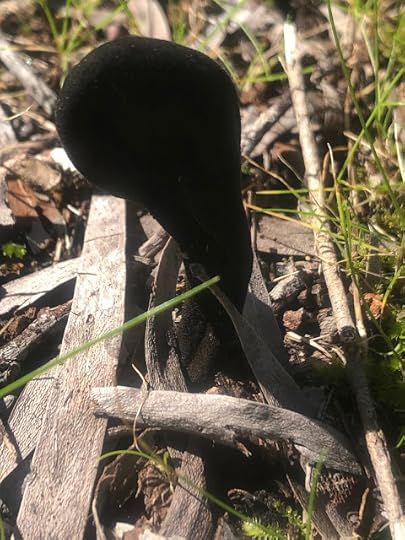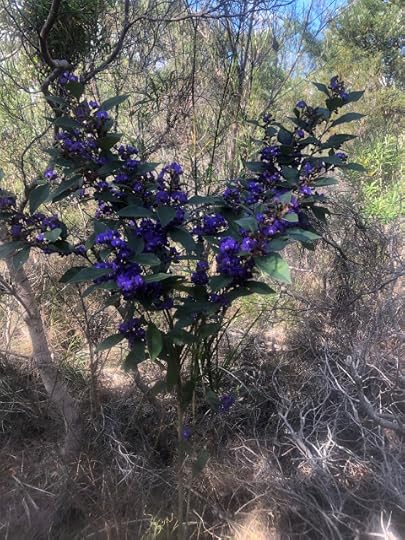How do you write about a tree?
A quiet day today, a walk around the block and thoughts about human and more-than human relationships. I've just re-read the essay by Ingrid Horrocks about writing nature called Dissolving Genre: Toward finding new ways to write about the world. Together with a colleague, I've run workshops and talks about writing the environment and the Anthropocene - and it always great to read what other writers have to say about this immersive but elusive practice.
 The hound and the guardian tree
The hound and the guardian treeIn the essay, she writes of meanings and modes of what she calls eco-nonfiction, ways to move beyond human frames of reference ('Is it possible to write or draw a forest?')
 Velvet Earth Tongue emerging from the Marri litter
Velvet Earth Tongue emerging from the Marri litterClose observation and attention
This kowphai bloom, that estuary
This possum, that coal fire
 Hovea elliptica are really popping!
Hovea elliptica are really popping!Ordinary or unpromising locations
Edgelands
The flourishing of motorway burbs
 A secret pond in the bush near my place
A secret pond in the bush near my placeAvoids idealisation of pristine wilderness
Fewer epiphanies in national parks
Fewer men on mountains
Favours systems that include humans
More suburbs, kitchens, children parents
But also oceans, rivers, oysters
 Mother Marri
Mother MarriObserves altered worlds
Eucalypts in San Francisco
Ice melts in Antarctica
Rewildings
And lost worlds
Endlings: an animal that is the last of its species
 Peppermint paving
Peppermint pavingOften draws on memoir
I, sometimes we
Finds continuities between the human and nonhuman
Warm breath misting
Demands we move outside a human frame of reference
“Is it possible to draw or write a forest?”
Struggles with how to do this
signed here.
Searches for organic forms and structures opening out stories of confluence
“What do I know but pieces, all at once?”
Understands that in the 21st century “to write about nature is a political act”
Hopes (within hopes) that a shift in attention
–a yielding of consciousness to a world beyond human–
will give to a shift in action.
Ingrid Horrocks, 'Dissolving Genre: writ with water', in Bending Genre: essays on creative nonfiction, Bloomsbury, 2014.



